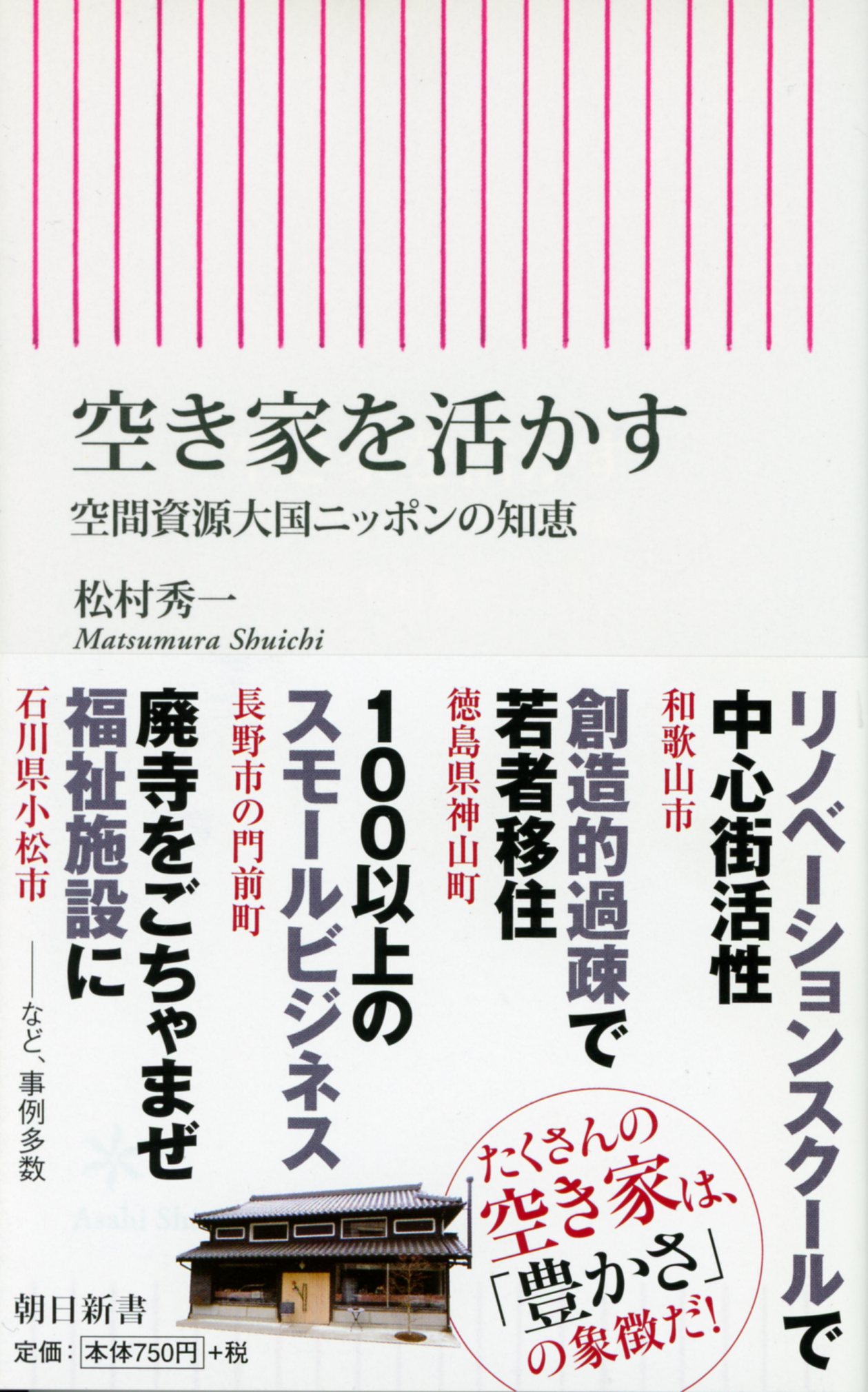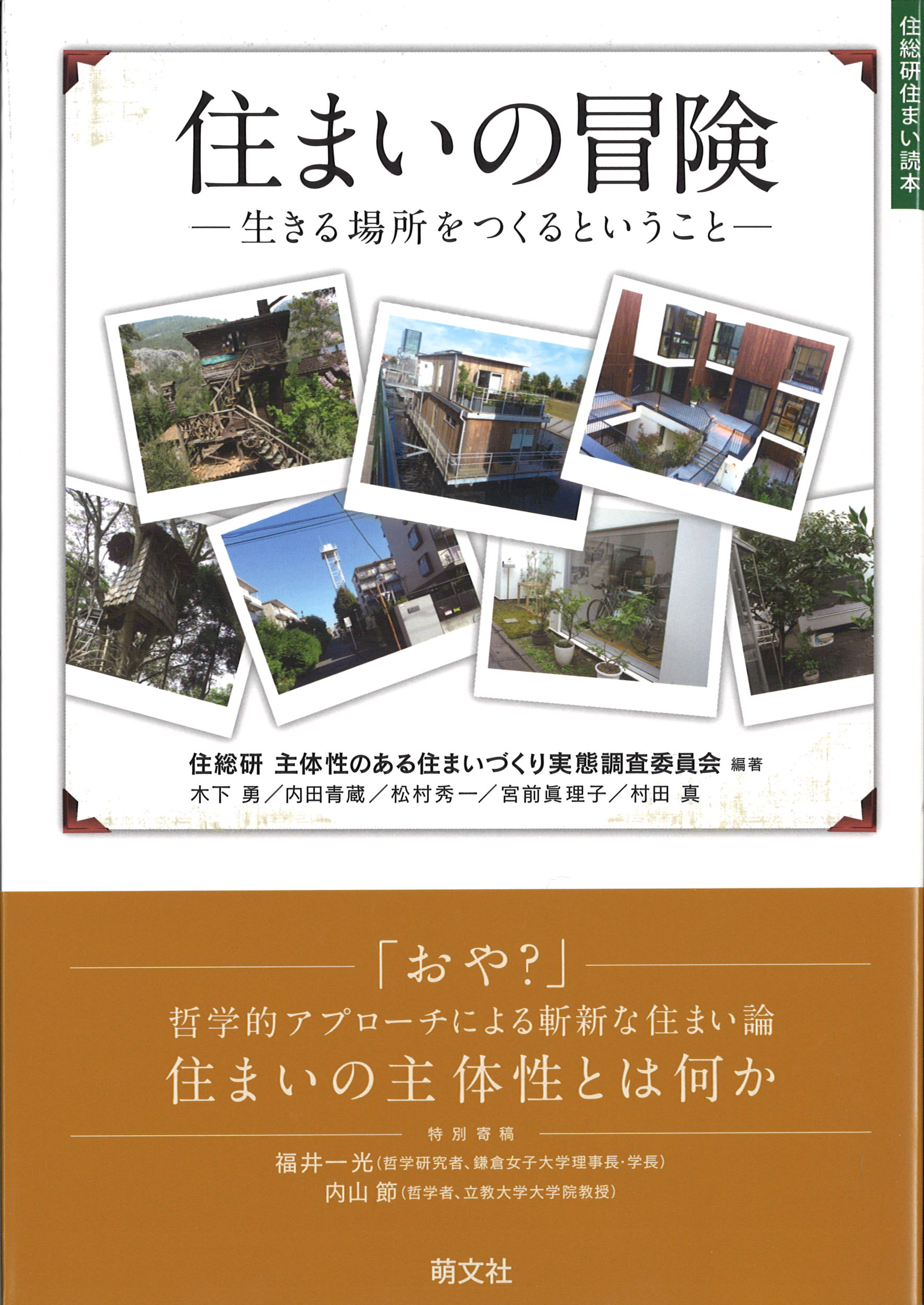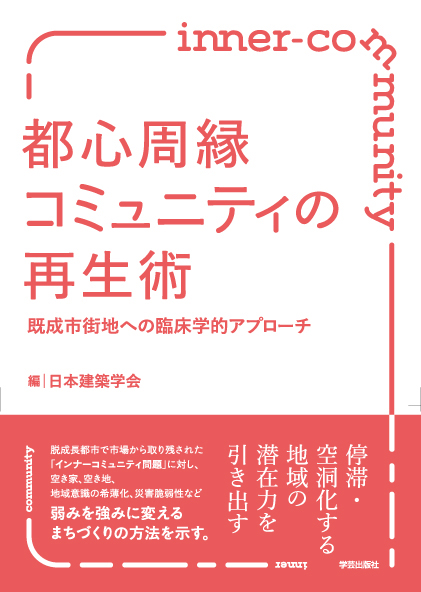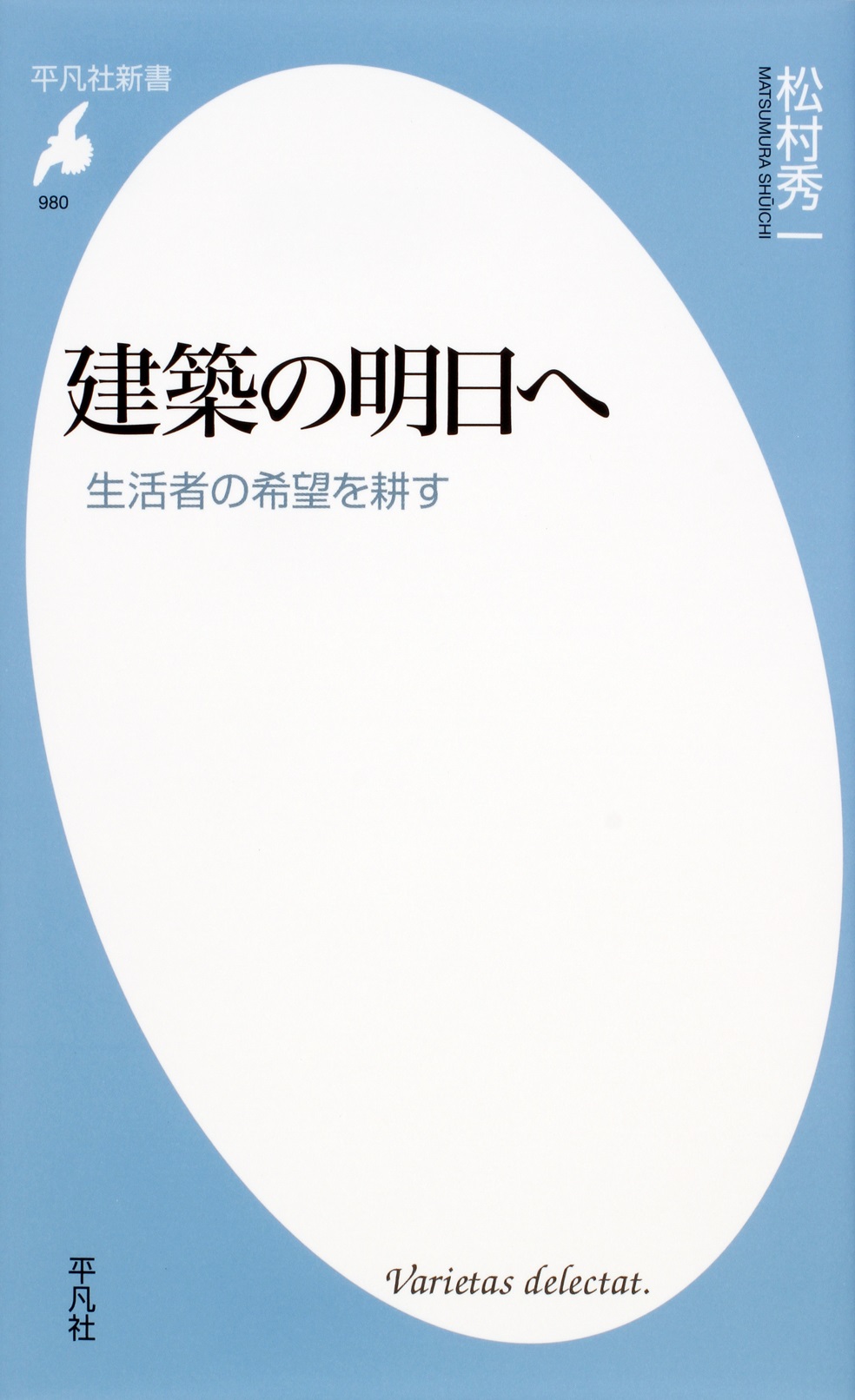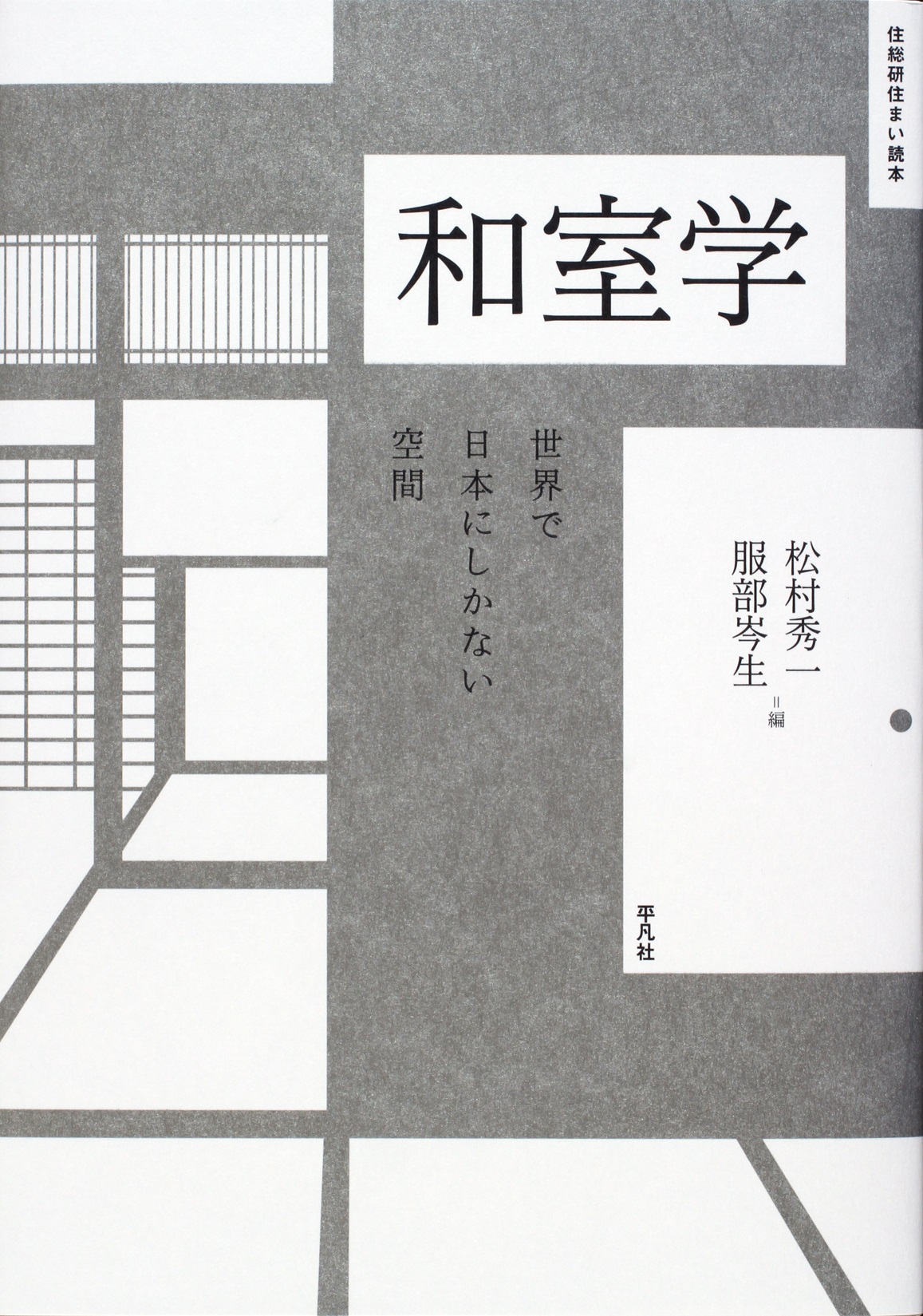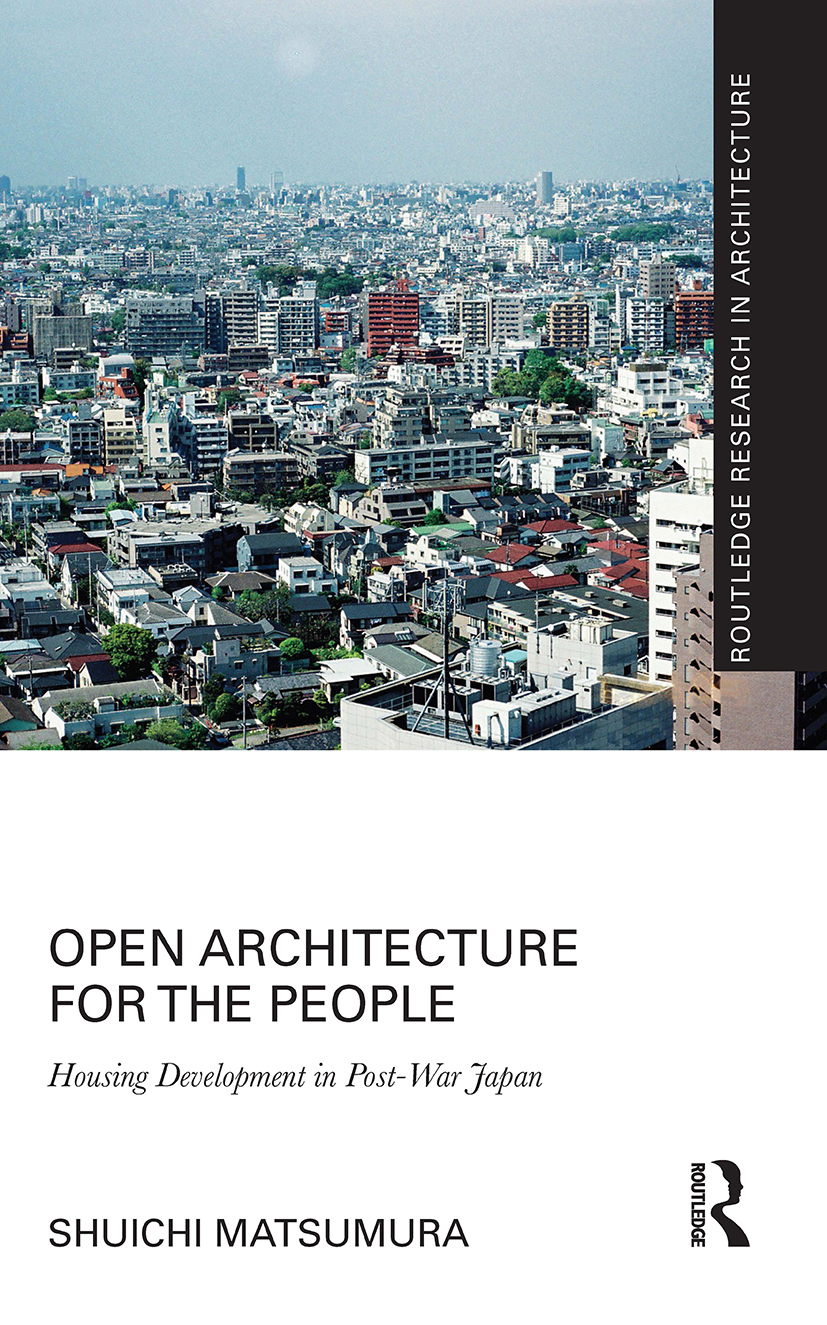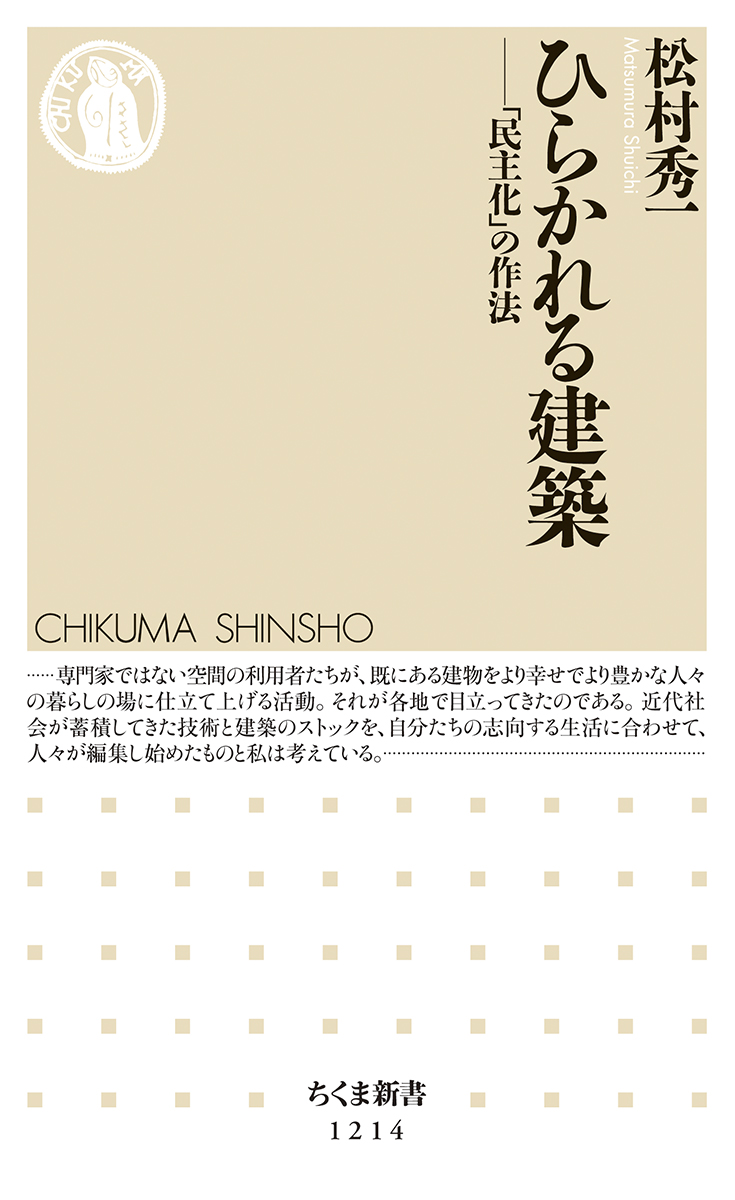
Title
Chikuma-Shinsho Hirakareru Kenchiku (Open Architecture – “Democratization” Methods)
Size
224 pages, paperback pocket edition
Language
Japanese
Released
October 05, 2016
ISBN
978-4-480-06919-1
Published by
Chikuma Shobo
Book Info
See Book Availability at Library
Japanese Page
Open Architecture – Democratization Methods is extremely significant; it first refers to the recent period of change in living environment formation, the gradual increase in and diversification of situations in which people can display their individuality, as “democratization.” It then divides this process of change, which occurred from the twentieth century onward, and in Japan, in particular, since the end of World War II, into three eras. Finally, it clarifies the situation of the current era and characterizes the knowledge and methods we already possess as usable resources.
Specifically, this book defines three eras. [1] First-generation democratization was aimed at universally delivering buildings that permitted people to lead modern lives suited to citizens of democracy. [2] Second-generation democratization was impacted by warfare, environmental destruction, and overemphasis on efficiency that neglected people, along with other severe distortions resulting from past modernization that advanced vigorously and unceasingly in a single direction. At the same time, movements expressing the demodernization spirit of the times sought to escape from this situation and appeared in various forms. At the industrial level, efforts intended to simultaneously achieve diversification, individualization, and volume production were undertaken, realizing these goals to a certain degree. [3] Third-generation democratization is marked by the stimulation of renovation-type city planning, migration, DIY, and other movements led by ordinary consumers, all of which forthrightly reveal current conditions in which the main issue is how individuals will live in a society characterized by sufficient architectural stock, on the one hand, and slow growth, aging, and a declining population, on the other. For each of these eras, this book introduces various matters drawing on the author’s long years involved in housing production and the history of architectural technology, and succeeds in providing a persuasive historical understanding of each era.
In its final chapter, this book builds on the above to clearly summarize as 10 methods the suitable ways in which ordinary consumers and experts can act based on the third-generation era of democratization: [1] visualizing overwhelming spatial resources, [2] drawing out and organizing the capacity to imagine utilization, [3] sharing information on arrangement of place, [4] forming groups to take action, [5] considering sustained management of urban space, [6] linking one space with another, [7] integrating landscaping, [8] evolving architecture, [9] implementing a future of living and working in towns, and [10] regaining rich lives despite systemic organization.
In a book review published in the Asahi Shimbun (Nov. 27, 2016) titled “The imaginations of ordinary consumers clear a path to the future,” reviewer Igarashi Taro evaluated the significance of this so-called concluding era as follows.
Japan already has a huge stock of buildings, and its current problem is its many unoccupied houses. The author therefore presents transformations— from box to place, or from producer to ordinary consumer, and argues that the important issue is the capacity to imagine their use. Unlike architecture, itself, which can be problematic, renovation can become a platform on which various people other than experts can participate. This is a welcome book that will help create rich lives by changing the functions of architecture.
As shown by the above, this work has clarified the needs of the current era, in which ordinary consumers play a leading role in the formation of living environments and the methods to do so.
(Written by MATSUMURA Shuichi, Project Professor, School of Engineering / 2018)



 Find a book
Find a book


 eBook
eBook